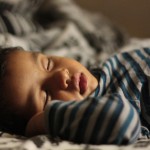
Sleep disordered breathing is common in childhood and it is estimated that between 0.8% and 24% of children are habitual snorers with 1-5% having obstructive sleep apnoea syndrome (OSAS). A number of different treatments have been used for OSAS in childhood, alteration of the sleeping position, continuous positive airways pressure (CPAP), weight loss tracheostomy, maxilla-mandibular advancement, uvulopalatopharyngoplasty, oral appliances and adeno-tonsillectomy, the most common being adeno-tonsillectomy.
The aim of this Cochrane review was to assess the effects of oral appliances or functional orthopaedic appliances for obstructive sleep apnoea in children.
Methods
Searches were conducted in the Cochrane Oral Health’s Trials Register, Cochrane Central Register of Controlled Trials (CENTRAL), Medline, Embase, LILACS, BBO, SciELO Web of Science, ClinicalTrials.gov and the World Health Organization International Clinical Trials Registry Platform with no date or language restrictions. Randomised or quasi-randomised controlled trials comparing all types of oral and functional orthopaedic appliances with placebo or no treatment for obstructive sleep apnoea, in children 15 years old or younger. Two reviewers independently selected studies, abstracted data and assessed study quality using the Cochrane risk of bias tool. The primary outcome was Reduction to less than one episode of apnoea per hour measured by standard polysomnography. Standard Cochrane analytical approaches were used.
Results
- 1 trial involving 23 children was included.
- The trial assessed apnoea-hypopnoea, daytime symptoms (sleepiness, irritability, tiredness, school problems, morning headache, thirstiness in the morning, oral breathing and nasal stuffiness) and night-time symptoms (habitual snoring, restless sleep and nightmares measured by questionnaire).
- Results were inconsistent across outcomes measures and time points.
- The evidence was considered very low quality.
Conclusions
The authors concluded
There is insufficient evidence to support or refute the effectiveness of oral appliances and functional orthopaedic appliances for the treatment of obstructive sleep apnoea in children. Oral appliances or functional orthopaedic appliances may be considered in specified cases as an auxiliary in the treatment of children who have craniofacial anomalies, which are risk factors for apnoea.
Comments
This is an update of Cochrane review last reviewed in 2007 , despite an extensive search no new studies have been included. This leaves just one very low quality study which provides insufficient evidence. In contrast more evidence is available for the use of oral appliances for obstructive sleep apnoea in adults , a 2006 Cochrane review of concluded;
There is increasing evidence suggesting that oral appliances (OA) improves subjective sleepiness and sleep disordered breathing compared with a control. Nasal continuous positive airway pressure (CPAP) appears to be more effective in improving sleep disordered breathing than OA.
They went on to suggest that OA should be considered in patients with mild symptomatic obstructive sleep apnoea a view supported by a 2014 review by Okuno et al (Dental Elf – 18th Jul 2014). However, while the evidence in adults is more suggestive of a benefit this cannot be translated to children so well conducted and reported studies need to conducted to assesses the benefit of OA for children.
Links
Primary paper
Carvalho FR, Lentini-Oliveira DA, Prado LBF, Prado GF, Carvalho LBC. Oral appliances and functional orthopaedic appliances for obstructive sleep apnoea in children. Cochrane Database of Systematic Reviews 2016, Issue 10. Art. No.: CD005520.DOI: 10.1002/14651858.CD005520.pub3.
Other references
Dental Elf – 18th Jul 2014
Review finds that oral appliances produce improvements in some obstructive sleep apnoea indicators
Lim J, Lasserson TJ, Fleetham J, Wright JJ. Oral appliances for obstructive sleep apnoea. Cochrane Database of Systematic Reviews 2006, Issue 1. Art. No.: CD004435. DOI: 10.1002/14651858.CD004435.pub3.

Obstructive sleep apnoea: insufficient evidence for oral appliances in children https://t.co/7zYIy3YyzW
[…] post Obstructive sleep apnoea: insufficient evidence for oral appliances in children appeared first on […]
Obstructive sleep apnoea: insufficient evidence for oral appliances in children – National Elf Service https://t.co/YHLmV1sAtL